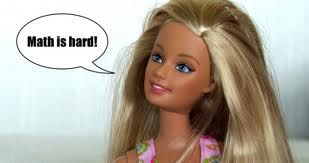KenKen is a type of arithmetic and logic puzzle which was invented in 2004 by Japanese math teacher Tetsuya Miyamoto.
Like Sudoku, the goal in KenKen is to fill a square grid with numbers so that each number appears exactly once in each row and each column of the grid, an arrangement known as a Latin Square . But whereas Sudoku has 3×3 boxes superimposed on the main grid with the additional constraint that each box must contain each of the digits from 1 to 9, in KenKen the additional constraint comes in the form of arithmetic relations imposed on connected groups of grid cells (generally known as cages).
The clue for each cage consists of a target number and a basic arithmetic operator (one of +, -, x or ÷); meaning that the numbers in the cage can be combined (in some order) using that operator to yield the desired target. Numbers may be repeated in a cage, as long as they are not in the same row or column.
Another difference between Sudoku and KenKen is that a normal Sudoku starts with several of the grid cells already filled in, so the goal is to find numbers consistent with those starting numbers. In contrast, a KenKen grid starts out empty and you have to figure out all the numbers for yourself, although some KenKens contain cages consisting of a single cell; the “clue” for such cages is the target number (with no operator specified).
KenKen grids come in various sizes, usually ranging from 3×3 up to 9×9, and they may use all 4 of the basic arithmetic operators or a restricted subset of them. Cages generally consist of 2 or 3 cells, but much larger cage sizes occur, especially in the larger grids. The variations in grid size, operators used, and cage size and shape allow for a huge range of difficulty in KenKens, so it’s possible to generate simple puzzles that are suitable for young children, and it’s also possible to generate extremely difficult puzzles to challenge even highly talented adults.
I wanted to post an image of a typical 6×6 KenKen grid here from Wikipedia but unfortunately the forum software won’t display it.
The name KenKen is a trademark, as is KenDoku. The official KenKen site is http://www.kenken.com/ ; various periodicals publish KenKens using the official name, but other sites use names like Calcudoku, Mathdoku, and CanCan to avoid trademark infringement. One of my favourite alternative sites is http://krazydad.com/inkies/ which has many hundreds of puzzles in PDF format for easy printing.
KenKen puzzles are fun to solve and highly addictive. :) They can be a great way to practice mental arithmetic that kids can enjoy, but they also develop logic skills and encourage scientific thinking: solving KenKens frequently involves making hypotheses about cage or cell contents that you then need to prove or disprove.
This thread is for general KenKen-related chit-chat, especially the discussion of KenKen techniques and strategies.

